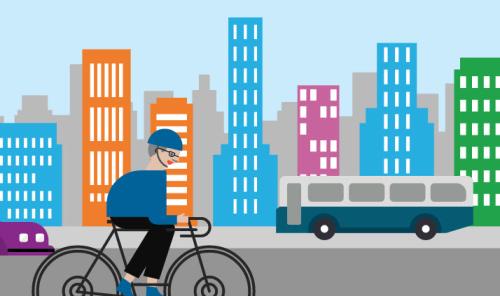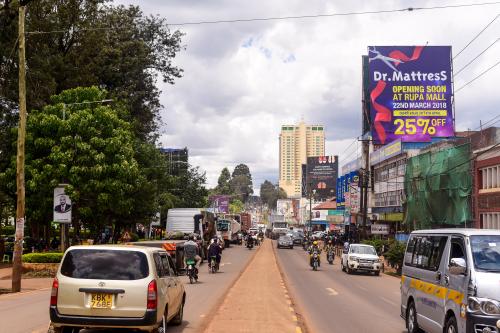Urban transport systems typically focus on the ease of moving people quickly and easily. However, simply increasing travel speeds – and promoting greater mobility – does not always lead to a more efficient and equitable built environment. To forge stronger connections, people need to have seamless access to work opportunities, education providers, medical facilities, entertainment hubs, and more.
Measuring access can be difficult to do systematically in many regions around the world, which has often resulted in a continued emphasis on mobility. Over the past couple years though, our team at the World Bank’s Transport and Information & Communication Technologies unit has been using new data and analytical tools to bridge this measurement gap, to better understand urban transportation patterns, and to more clearly quantify urban accessibility.
Developing clearer accessibility metrics
Specifically, by using a new “Accessibility Tool,” our team has been able to carry out analyses that provide more reliable measures of the impacts of different transportation projects or policies. The tool is not only useful for comparing transportation scenarios, modes, services, and infrastructure plans, but it is also helpful for understanding land use and spatial patterns – a key component of accessibility. Furthermore, by moving beyond the traditional mobility approach, we are now exploring a broad array of issues related to reliability, equity, affordability, and gender equality.
Indeed, this new methodology is quite resilient, even when data are not readily available in some global regions. For instance, in Dhaka, Bangladesh, our team lacked detailed economic data, but we were able to conduct a more nimble version of this analysis by focusing on key economic centers in the city to gauge access to different opportunities. We have also been able to uncover various population access concerns in cities like Nairobi, Kenya, as shown in the map below.

We can also aggregate the accessibility analysis at a city level to calculate indicators that yield a better understanding of the effectiveness of urban transport systems. The accessibility indicator, or effective size of the labor market in a metropolitan area, is the share of the area’s jobs accessible within 60 minutes using non-private modes. Not only can you utilize this indicator to evaluate a city’s accessibility, it can also be used to benchmark a city’s performance through time and compare cities globally, across different urban spatial dimensions.
In short, the Accessibility Tool leverages the increasing availability of big data and advances analyses to quickly measure accessibility for more cities around the world.
Measuring accessibility in data poor environments
As we try to globalize this new standardized way of comparing urban access, there are still major questions concerning the tool’s widespread applicability, including its use in data-poor environments.
The first problem we often face is understanding the current supply and demand of transit services. The availability of open-access, web-based tools has dramatically decreased the barriers to create geographic datasets – including Geographical Information System (GIS) and General Transit Feed Specification (GTFS) data – of transit systems around the world. Being able to quickly digitize the transit systems of cities around the world will allow for better service planning and monitoring. These tools helped our team digitize the entire public transport system of Cairo in only two weeks.
Another significant challenge is getting spatialized economic opportunity data. For instance, even when we have spatialized socio-economic data, it can be difficult to capture informal work opportunities. In Kigali, Rwanda, we operationalized an accessibility study to prioritize high capacity transit corridors, but we found that the economic census (which only captured formal jobs) missed 75-80 percent of opportunities in some areas.

What is fascinating is that the barriers to data are greatly decreasing in many parts of the world, and technology is helping us to answer the data gaps through non-traditional methods. In Dar es Salaam, Tanzania, Bogota, Colombia and Rio de Janiero, Brazil, we have tried to use alternative data sources to complement our traditional employment census. We have been exploring the use of Earth Observation (EO) Imagery and Cell Phone Record (CDR) Data to estimate the distribution of employment and opportunities in those cities, with great potential for informing our future analyses.

Moving forward: scaling up, quality, livability, and sustainability
Accessibility indicators are not just conceptually powerful, they are also becoming easier to operationalize. As such, we want to continue exploring the lens of accessibility in different contexts, and use this methodology as a central element of how we understand and compare cities globally. In fact, “access for all” is one of the four pillars of the Global Tracking Framework being developed by the World Bank as a multi-stakeholder effort to measure our progress towards sustainable transport (Sustainable Mobility for All).
The ability to quantify accessibility opens an entirely new way of understanding cities and transport networks. We want to start exploring what is the impact of service quality and safety on accessibility. This will require better data collection on services and infrastructure that more accurately represent the quality of our transport services.
Furthermore, although we have typically utilized home-based work trips to plan our transport systems, transit should provide access to more opportunities, including schools, health centers, shopping and commercial areas. As we scale up this effort, we should start to explore more general accessibility metrics that integrate livability.
Enhancing accessibility to modern mobility solutions, and ultimately to economic and social opportunities is an important aspect of sustainable transport. Using an accessibility criterion will be critical to achieving the United Nations’ Sustainable Development Goal to “make cities and human settlements inclusive, safe, resilient and sustainable.” The combination of open data and open source software are exciting, making it possible to reframe our conversations in terms of access, and making it easy for cities and policymakers to use.




Commentary
Measuring and exploring the global dimensions of access
February 15, 2017